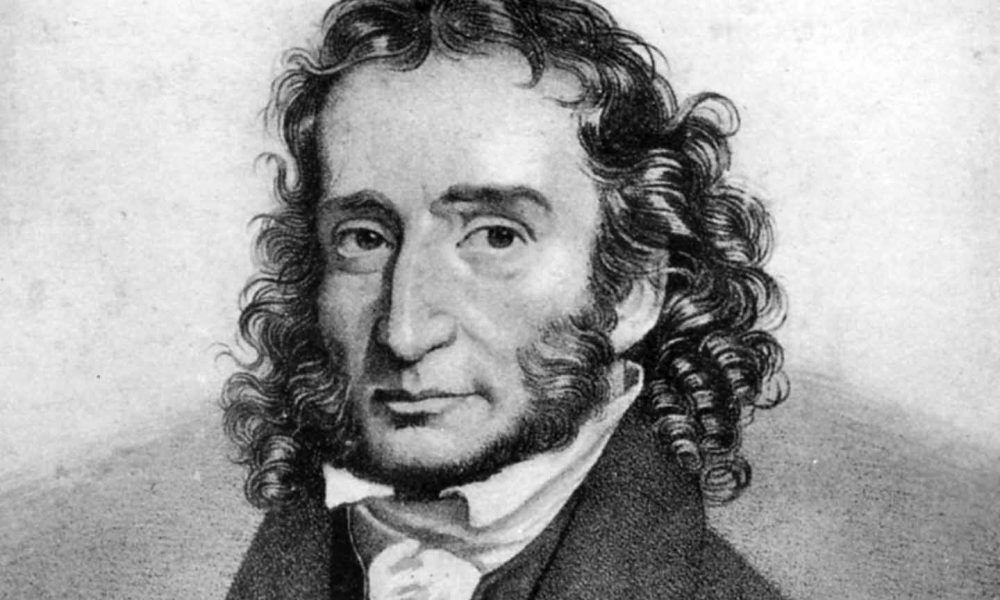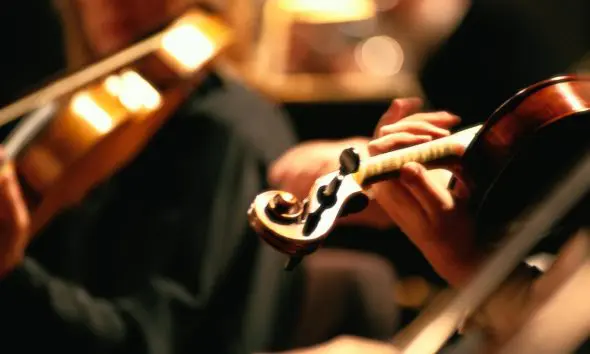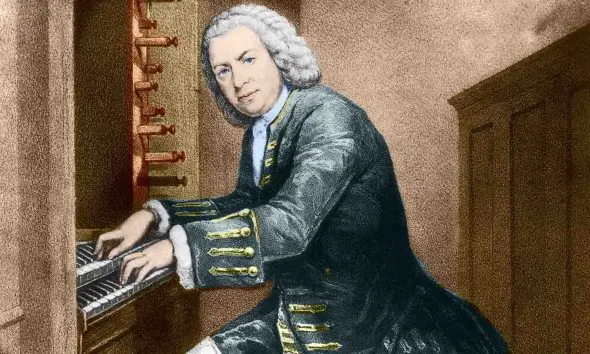Best Paganini Works: 10 Essential Pieces
Discover our selection of the best Paganini works featuring 10 pieces by the composer-virtuoso who made a pact with the devil.

Niccolò Paganini is perhaps the most elusive and intriguing character in Western music. He was a violin virtuoso of supreme, unmatched talent and technical ability, the likes of which had not yet been seen in the late eighteenth century. His teachers frequently passed him around, believing they had nothing left to teach the young prodigy; indeed, young Paganini was touring Europe by the age of 15. Legend has it that the fiery fiddler could play a staggering 12 notes per second, with hands so large and lithe he could cover 3 octaves at a time. He transcended the boundaries of what was thought to be technically possible, pouring innovations and imagination into his own compositions, which became his means to dazzle audiences and show off his technical prowess. Such was the level and intensity of his skill that rumors of supernatural influences and black magical powers plagued his career. Whispers of Paganini’s shady personal life, alcoholism, and ghoulish appearance perpetuated such rumors: there were even stories that he used the intestines of a murdered woman as his violin strings, imprisoned her soul in the instrument, and her screams could be heard when he performed. Was this a man who sold his soul to the devil in return for an unworldly virtuosic ability? Or was his music just too staggering, too astounding to be believed? Scroll down to discover our selection of the best Paganini works featuring 10 masterpieces – if you dare!
Listen to Salvatore Accardo Plays Paganini on Spotify.
10: Caprice d’Adieu, Op. 68 (1833)
For obvious reasons, much of Paganini’s string-centric oeuvre is for solo violin, such as the delightful Caprice d’Adieu. This light and lively piece is deceivingly difficult to play: it is jam-packed full of fiendish techniques, but no matter how widespread the chords or fast the trills or frantic the bowing, the violinist must retain a sense of fluidity and ease in keeping with the light bright melody. In this way, Caprice d’Adieu is the perfect example of the Paganinian conundrum: the struggle between pushing technical limits without sacrificing musical expression and quality of composition. This struggle is the very essence of Paganini: the composer versus the performer.
9: Le Streghe, Op. 8 (1913)
Works like Le Streghe, meaning ‘Witches’ Dance’, only perpetuate the composer’s enduring reputation as Paganini the paranormal. A dark and vivacious orchestral theme – taken from the ballet Il Noce di Benevento (‘The Walnut Tree of Benevento’) by Süssmayr – opens to four wickedly twisted variations, led, of course, by the violin. Paganini incorporates his signature pyrotechnics, including hectic string crossings, screeching harmonics, and clashing harmonies; techniques that Paganini also demands from other sections of the orchestra. The result is otherworldly anarchic and, occasionally, a borderline uncomfortable listening experience, but it is ultimately a wonderfully warped piece, full of Paganini’s fire and flair.
8: Centone di Sonate, Vol. 1 (1828-29)
Paganini’s talents didn’t stop at violin and composition: he was also a gifted guitarist, famously stating, “The violin is my mistress, but the guitar is my master.” Paganini experimented with various string textures in Centone di Sonate, a collection of sonatas for violin accompanied by guitar. These sonatas are something of a departure from Paganini’s usual compositional style, eschewing the usual technical pyrotechnics in favor of a simplified, less demanding idiom. Nevertheless, the singing, soaring quality of the violin, and soft lilting guitar accompaniment are truly captivating, and convey a gentler, more emotive side of Paganini’s work.
7: Moses Fantasy (1818)
Like Le Streghe, the Moses Fantasy adopts a theme and variation structure, with the emotive main theme borrowed from Rossini’s opera Moses in Egypt. A truly amazing feature of this piece is that Paganini intends for it to be performed entirely on the G string. He also instructs that the G string is tuned up a minor third to Bb, a technique known as scordatura. Exploring the specific timbre of one string in this way creates a dense, rich sound at its lowest pitch, and a raw, strained emotional feel in the higher positions. The Moses Fantasy also sees the use of col legno, a bowing technique where the bow is turned so that the wood, rather than the hair, comes into contact with the string to produce a more percussive sound. This is the perfect example of musicality and technicality working together to produce an astounding, captivating piece.
6: Ghiribizzi (1820)
Ghiribizzi, meaning ‘whims,’ are a set of 43 miniatures for guitar. They were written for the daughter of Signor Botto of Naples, to aid with her practice and technique. As the name suggests, Paganini ostensibly thought of these more as doodles than fully-developed compositions. Nonetheless, they are charming and varied pieces that form a relatively unexplored corner of the guitar repertoire. Each miniature has a distinctive feature: No.1 is scalic, whilst 9 and 10 explore arpeggio patterns, and open string bass lines. Paganini reuses tunes from other works: whilst others explore tunes from other pieces: No.17 uses the theme from Le Streghe whilst No.16 is inspired by an aria from Paisiello’s opera, La Molinara (‘The Miller’s Wife’).
5: Variations on ‘God Save the King’, Op. 9 (1829)
Paganini was a prolific borrower of melody, as we have seen, which even extended to national anthems. Variations on ‘God Save the King’, one of Paganini’s best works, typifies his bombastic, everything-but-the-kitchen-sink approach to composition. For solo violin, this piece is quirky to the extent that it’s almost absurd, and yet oddly compelling. Paganini tests out new methods of sound production with this well-known tune, such as left-hand pizzicato interspersed with dense chords, trilled artificial harmonics, and flying spiccato (a bowing technique pioneered by Paganini, where the bow is controlled whilst bouncing off the string). It’s Paganini’s sheer imagination and inventiveness that shines through in this work: the art of taking a simple tune and turning it into a mesmerizing show piece.
4: Moto Perpetuo (1835)
As the title suggests, this one takes some serious stamina. Moto Perpetuo, translated as ‘perpetual motion,’ is an endless rhythmic rollercoaster performed at rapid pace. Designed to challenge and push any violinist mad enough to take it for a spin, this piece is completely chaotic and utterly Paganinian. It requires the minutest of staccato bow strokes and absolute precision in the left-hand for a relentless, eye-watering, finger-crippling four minutes. You may need to suspend some disbelief with this one: the endless torrent of notes will leave your head in a spin and your jaw on the floor. No wonder Paganini’s audiences thought him a man possessed.
3: Violin Concerto No.1 in D major, Op. 6 (1817)
Paganini’s larger-scale orchestral works, such as the violin concertos, are often grand and dramatic affairs, with equally dramatic, exhibitionist violin parts. The first violin concerto provided him with another compositional context in which he could show off his virtuosity. Like the Moses Fantasy, Violin Concerto No.1 also made use of scordatura. The orchestral parts are written in Eb major whilst the violin is written in D major, but instructed for all four strings to be tuned up a semitone. This tuning trick puts tonal distance between the two performing forces, intensifying the spotlight on the soloist. Whilst the second movement hints at the influence of bel canto and opera, the finale is compositional Marmite: a high-octane, string-breaking display of Paganini’s virtuosic tricks.
2: Violin Concerto No.2 in B minor, Op. 7 (1826)
The second of Paganini’s violin concertos is among his most famous works. It’s more frequently referred to by the nickname ‘La Campanella’ (meaning ‘the little bell’) after the twinkling bell featured in every recurrence of the main theme in the third movement. These bell-like sounds are mimicked by the violin, with light, airy brushstrokes and shining harmonics. Compared to the first concerto, the second is much more restrained in terms of extended techniques (by Paganini’s standards, anyway: he still had an audience to dazzle) and is much more lyrical in nature. ‘La Campanella,’ one of Paganini’s best works, later became the basis of Franz Liszt’s piece, Grandes Études de Paganini.
1: 24 Capricci, Op. 1 (1802 – 1817)
Undoubtedly Paganini’s best work is 24 Capricci for solo violin, written in groups over several years. Like Ghiribizzi, each miniature is a study of a particular element: No. 1 is aptly nicknamed ‘the arpeggio,’ practicing rapid string crossings; No. 6 is, for obvious reasons, nicknamed the ‘trill’; whilst other names derive from the character of the piece. Notably, unlucky No. 13 is known as ‘The Devil’s Laughter.’ Paganini’s works had enduring impact: as well as Liszt’s interpretation of La Campanella, there have been countless arrangements of No 24, the final caprice in A minor, with Brahms, Rachmaninov, and Andrew Lloyd Webber all drawing inspiration from the piece. For many years Paganini was the only one able to play it, and yet, ironically, he makes a profound dedication of the Capricci “to all artists.”
Discover more of our articles collecting the best works of composers through the ages.






